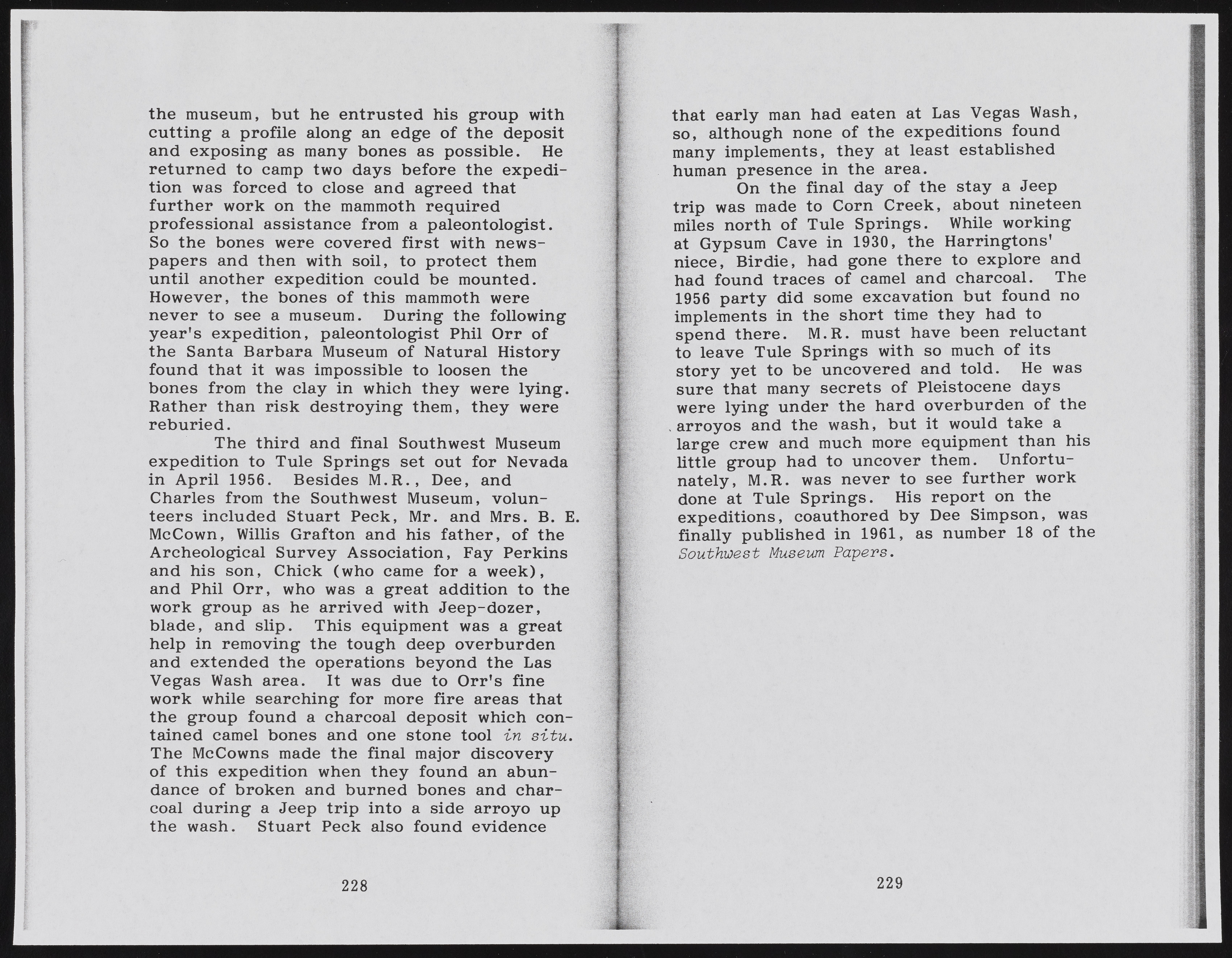Copyright & Fair-use Agreement
UNLV Special Collections provides copies of materials to facilitate private study, scholarship, or research. Material not in the public domain may be used according to fair use of copyrighted materials as defined by copyright law. Please cite us.
Please note that UNLV may not own the copyright to these materials and cannot provide permission to publish or distribute materials when UNLV is not the copyright holder. The user is solely responsible for determining the copyright status of materials and obtaining permission to use material from the copyright holder and for determining whether any permissions relating to any other rights are necessary for the intended use, and for obtaining all required permissions beyond that allowed by fair use.
Read more about our reproduction and use policy.
I agree.Information
Digital ID
Permalink
Details
More Info
Rights
Digital Provenance
Publisher
Transcription
the museum, but he entrusted his group with cutting a profile along an edge o f the deposit and exposing as many bones as possible. He returned to camp two days before the expedition was forced to close and agreed that fu rth er work on the mammoth required professional assistance from a paleontologist. So the bones were covered first with newspapers and then with soil, to protect them until another expedition could be mounted. However, the bones o f this mammoth were never to see a museum. During the following year's expedition, paleontologist Phil Orr of the Santa Barbara Museum o f Natural History found that it was impossible to loosen the bones from the clay in which they were lyin g. Rather than risk destroying them, they were reburied. The third and final Southwest Museum expedition to Tule Springs set out for Nevada in A pril 1956. Besides M.R. , Dee, and Charles from the Southwest Museum, volunteers included Stuart Peck, Mr. and Mrs. B. E. McCown, Willis Grafton and his father, o f the Archeological Survey Association, Fay Perkins and his son, Chick (who came for a w eek), and Phil O rr, who was a great addition to the work group as he arrived with Jeep-dozer, blade, and slip. This equipment was a great help in removing the tough deep overburden and extended the operations beyond the Las Vegas Wash area. It was due to O rr's fine work while searching for more fire areas that the group found a charcoal deposit which contained camel bones and one stone tool situ. The McCowns made the final major discovery o f this expedition when they found an abundance o f broken and burned bones and charcoal during a Jeep trip into a side arroyo up the wash. Stuart Peck also found evidence 228 that early man had eaten at Las Vegas Wash, so, although none o f the expeditions found many implements, they at least established human presence in the area. On the final day o f the stay a Jeep trip was made to Corn Creek, about nineteen miles north o f Tule Springs. While working at Gypsum Cave in 1930, the Harringtons' niece, Birdie, had gone there to explore and had found traces o f camel and charcoal. The 1956 party did some excavation but found no implements in the short time they had to spend there. M.R. must have been reluctant to leave Tule Springs with so much o f its story yet to be uncovered and told. He was sure that many secrets o f Pleistocene days were lyin g under the hard overburden o f the , arroyos and the wash, but it would take a large crew and much more equipment than his little group had to uncover them. Unfortunately, M.R. was never to see further work done at Tule Springs. His report on the expeditions, coauthored by Dee Simpson, was finally published in 1961, as number 18 of the Southwest Museum Papers. 229

